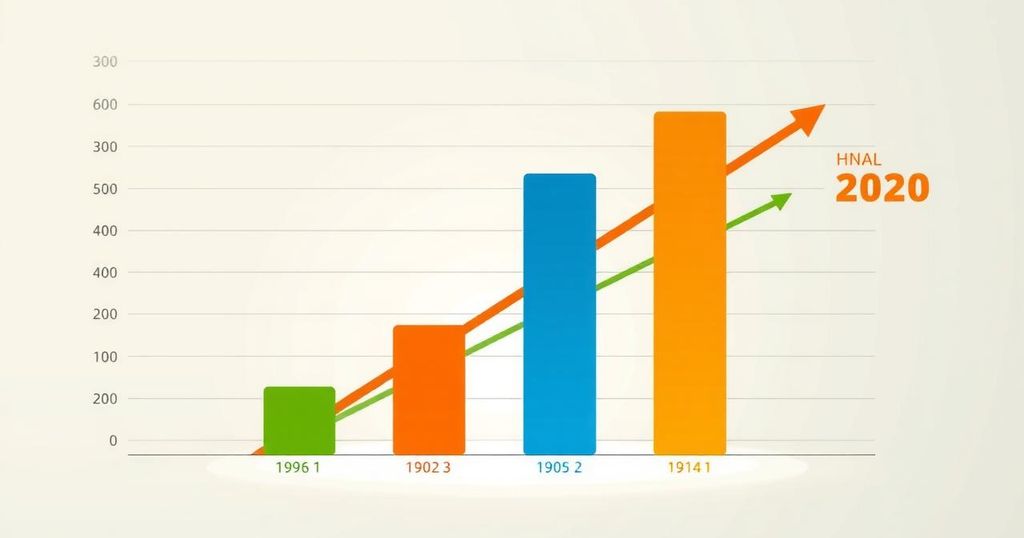Rwanda’s inflation rate fell to 4.8% in 2024 from 14.0% in 2023, attributed to strong agriculture, reduced commodity prices, and tight monetary policies. Governor Soraya Hakuziyaremye discussed the implications for economic stability and purchasing power, while signaling caution regarding potential risks in the future. The economy shows promise for growth beyond previous projections.
Rwanda has experienced a significant drop in inflation, with rates decreasing to 4.8% in 2024, compared to 14.0% in 2023. Central Bank Governor, Soraya Hakuziyaremye, highlighted that this reduction is due to robust domestic agricultural performance, falling international commodity prices, and stringent monetary policies enacted by the central bank. Furthermore, she noted that government interventions also played a vital role in moderating inflation rates.
The decline in inflation signifies enhanced economic stability and increased consumer purchasing power. Experts assert that lower inflation is conducive to reduced business costs, fostering both investment and economic growth. Households benefit from stabilized prices, which leads to an increase in disposable income and overall economic confidence.
Despite the positive trend, Hakuziyaremye indicated that a temporary rise in inflation occurred in early 2025, reaching 7.4% in January due to a base effect linked to a strong agricultural harvest. However, she expressed confidence in inflation moderating to 6.3% by February 2025, with projections suggesting a range of 6.5% for 2025 and 4.1% for 2026.
Nevertheless, she cautioned that ongoing risks must be carefully monitored. These include escalating regional and global tensions which could jeopardize economic stability, along with adverse weather conditions affecting agricultural output. In contrast, inflation in Sub-Saharan Africa remains high, projected at 12.3% for 2025.
The bi-annual meeting serves to convey the central bank’s monetary policy stance, aimed at ensuring financial stability. Hakuziyaremye referred to the stability of Rwanda’s financial sector, though acknowledging vulnerabilities linked to rising credit risk. The central bank continues to monitor existing and emerging risks to secure adequate liquidity and responsible risk management within financial institutions.
In light of a fluctuating global context, Hakuziyaremye discussed declining commodity prices, particularly a 2.7% drop in the global energy index in 2024, with expectations of a further decline of approximately 6.3%, primarily driven by reducing crude oil prices.
Additionally, high-frequency indicators suggest that Rwanda’s economy may grow beyond the initially projected 8.3%. This growth is largely attributed to double-digit expansions in the industrial and services sectors. Exports saw a notable increase of 6.9% driven by higher prices of traditional commodities, as well as sustained regional demand for manufactured and re-exported goods.
Import growth in 2024 was noted at 5.8% due to heightened demand for capital goods, while the central bank reduced its lending rates to 6.5%, leading to a slight decrease in interbank rates. Hakuziyaremye observed that while larger corporate loans are decreasing, personal loan rates remain high, affecting the average lending rate overall.
In summary, Rwanda’s inflation decreased substantially in 2024, reflecting significant economic stability and increased consumer purchasing power. Central Bank Governor Soraya Hakuziyaremye expressed optimism about future inflation projections while acknowledging the risks posed by regional tensions and weather conditions affecting agriculture. The overall outlook for Rwanda’s economy remains favorable, with projected growth bolstered by improvements in key sectors and export performance.
Original Source: www.newtimes.co.rw




